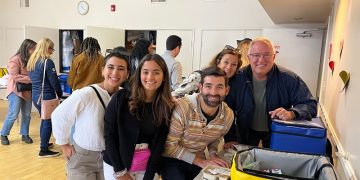From the moment AB 32 and its mandate for greenhouse gas reductions passed in 2006, conservative opponents and climate change deniers have vilified it as an economic suicide pact for California.
But that may not be so, in part because of how the cap and trade system for lowering emissions of carbon dioxide (CO2) is now working.
What’s more, no one expected this to be a big state moneymaker back when current Democratic state Sen. Fran Pavley and then-Gov. Arnold Schwarzenegger were pushing it.
But it’s turning out to be just that, in about the amounts the current state budget proposal figured on – unless the state Chamber of Commerce succeeds in a current legal challenge to the law’s fund-raising side.
One question that lawsuit raises is just what to do with the more than $140 million raised in the first two state auctions of air pollution permits that are key to the system of gradually reducing limits (caps) on emissions. Spend it for the kind of green projects outlined in the law or set it aside in case the chamber wins? So far, Gov. Jerry Brown is coming down on the side of spending the money, but that’s not final.
This was designed all along to let some companies keep polluting while overall statewide levels of CO2 and other greenhouse gases slowly sink to 1990 levels. Only companies that emit more than 25,000 tons of CO2 yearly are covered. So far, more than 260 are involved in the program, from oil refineries and power companies to dairies and large corporate farms.
All those outfits last November were given 90 percent of the pollution allowances they would need to continue operating at current emission levels for the next few years. (Each allowance, or permit, lets the owner emit one metric ton of CO2). Any that reduce greenhouse gases by just 10 percent, then, will have no further expenses for years to come.
The pollution permit auctions are only about the other 10 percent that most of the big companies involved will need.
There is strict secrecy about who’s bidding how much, too, the ARB claiming that’s so companies can freely bid on the allowances and reveal to no one but the ARB what they think it will cost them to clean up. Future planning will be based on those numbers. As in most auctions, the highest bidder wins, getting the permits it wants. The next highest bidders also get theirs, a process that continues until all available allowances are gone.
Everyone getting allowances in the auction pays for them at the lowest winning bid level, but never less than $10 per credit. In short, these auctions minimize what the state takes in, rather than maximize it, while still giving the permits significant value. The idea, says ARB spokesman Stanley Young, is to help fight climate change by delivering the most greenhouse gas reductions at the least cost.
Brown’s tentative 2013-14 budget forecasts the auctions will bring in about $400 million by the middle of next year.
Testimony at three hearings staged around the state over the last few months might help Brown decide where to put the money.
For sure, he can’t use it just to help balance the budget. AB32 requires it be spent on projects that reduce CO2. Because cars and trucks are the biggest CO2 producers in California, anything that helps take some of them off the road may qualify for funding.
So carbon permit auction money could be used, for one example, to help pay off bonds for the state’s nascent bullet train. Or to install solar panels. Or to improve energy efficiency in homes, offices and industrial plants. But probably not for education, roads or parks.
As for cap and trade itself, no company actually has to account for its allowances until November 2014. Polluting businesses meanwhile can buy or trade for credits given to other firms last fall or bought by them since. That’s supposed to make it profitable for companies originally given pollution allowances to cut their emissions, then sell or trade some of those they got. That’s the “trade” in cap and trade.
Only time will tell if all this will work without costing jobs and profits, especially for businesses using older equipment.
Already, the University of California has said its spending on pollution permits may reach $28 million yearly before 2018, equivalent to the cost of educating 2,800 students at an average of $10,000. No one is saying whether that will that force some students out or cause fee increases.
The bottom line: The first impression is that the air board probably has gotten this program right. It’s too soon to be sure whether it will work better than clumsy cap and trade systems previously tried in Europe and several Northeastern states. But the fact most businesses paid nothing for 90 percent of their pollution allowances is a real positive.













